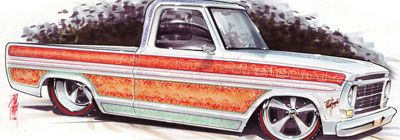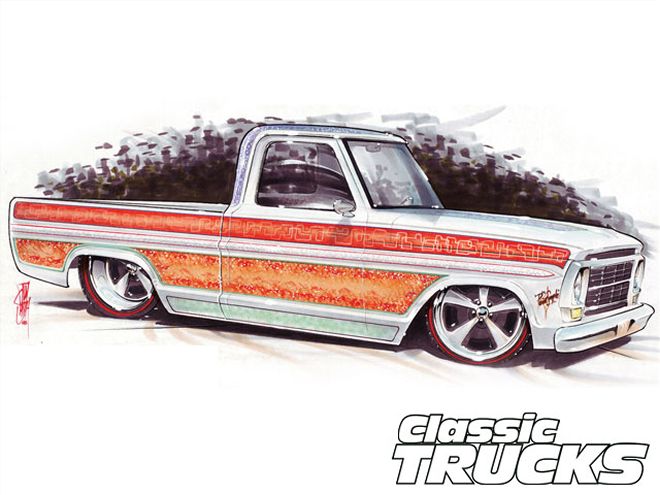

No matter how it happens, in every exhaust system, gases need to be carried from the engine safely rearward so that none of those fumes get into the passenger compartment. There are more ways to do this than we magazine types have ways to fancily describe when mentioning exhaust systems in a truck feature, but it doesn't really matter how--just as long as it happens, right?
Sure, some people might get away with running nothing but open headers, simple dump tubes, or any combo of both, but not around here, and not for very long. Of course taking your truck to the local muffler shop to have a few sticks of galvanized tubing bent up is a feasible option for most people and certainly does the job. The problem with this is the life expectancy of a mild steel exhaust system and the typical pinched bends in the tubes done with a non-mandrel pipe bender. There is only one way around both of these issues if you are building a truck that warrants it--build a custom exhaust system with mandrel-bent 180-, 90-, and 45-degree bends. When done right, a mild steel or stainless steel exhaust built using mandrel bends can look like seamless tubes snaking through the framework of any truck. If you are going to put this much work into it, you might as well use stainless so it won't rust out.
I located Stainless Works online, and looking through their website I found all the stuff I needed to build a top-notch exhaust system for my '68 F-100. After deciding that I'd use 2-inch tubes, I had a choice of either their butt-weld or slip-fit basic Rod Builder Kit. I chose the former. First timers might like the slip-fit option, except if you have to make a cut in the middle of a bend, you might lose certain slip-fit joints and will still have some butt joints to deal with. In my opinion, a butt-weld system might actually be easier to deal with, as long as the chop saw you are using is set up to cut as close to exactly square as possible.
To round out the rest of the exhaust system from Stainless Works, I picked two of their straight-through turbo mufflers with the inlet/outlet configuration I thought I'd need; three-bolt flanges so I could make the mufflers totally removable; their trick exhaust hanger brackets; and some polished bell tips. Stainless Works makes over a dozen different polished tips to put the finishing touches to any exhaust system, even the one that may already be in your truck. I put quite a bit of thought in how I wanted the exhaust to exit the truck, both the tip style and its location. This can make or break all the hard work done under the truck that almost nobody will see when it's on the road, so it does deserve some good eye-ballin'!
Like most other fabrication projects, cleanliness is the key to quality results, especially when a TIG welder is involved. Even though a MIG could be used with thin stainless wire, both sides of mandrel bent tubes are always greasy and/or oily since they need lubrication to make such smooth bends. Liberal use of rags and brake cleaner will do the trick once some cuts are made. I started TIG welding my tubes with typical 1/16-inch ER308 stainless filler rod, but it proved to be too thick for the little to no gaps I had in the butt joints. I went to the local welding supply store and got a pound of 0.045-inch stainless, which worked better.
One last note about working with stainless steel--it's hard! Not hard to do, but it is a hard metal. Forgo trying to cut it with most saw blades, you'll dull them quickly. There are probably special blades out there, but the lowly chop saw I mentioned earlier is the ticket. I almost used one entire blade in it to make all my cuts, which is pretty good--and cheap. For most grinding duties, I usually prefer a rubber-backed, 3-inch, 36-grit Roll Loc disc on an angle grinder. But stock up on discs--the stainless likes to go through them like candy! Also, there are small drum sander arbors for die grinders available in many diameters that come in handy when working with tubing.
Well, there you have it. Working with tubing isn't rocket science, but you need to have your best thinking cap on tight. You don't want to find yourself saying, "I cut it twice and it's still too short!" If that does happen, weld it back together and try again. Remember to be safe while cutting, grinding, and welding. Stainless Works has a great FAQ section on their website with lots of information about stainless steel--check it out!